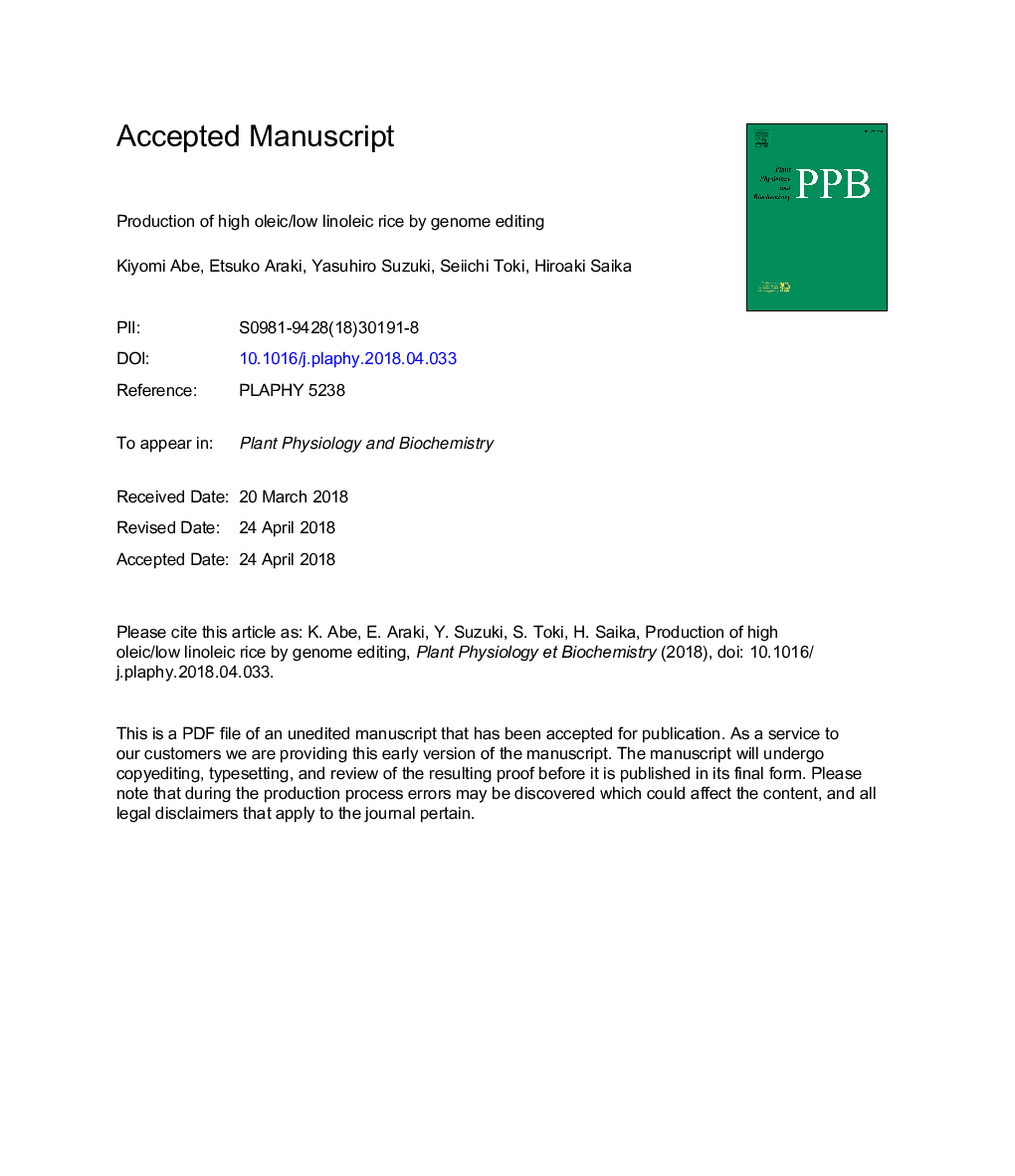| کد مقاله | کد نشریه | سال انتشار | مقاله انگلیسی | نسخه تمام متن |
|---|---|---|---|---|
| 8956066 | 1646127 | 2018 | 19 صفحه PDF | دانلود رایگان |
عنوان انگلیسی مقاله ISI
Production of high oleic/low linoleic rice by genome editing
ترجمه فارسی عنوان
تولید برنج لینولئیک بالا / پایین توسط ویرایش ژنوم
دانلود مقاله + سفارش ترجمه
دانلود مقاله ISI انگلیسی
رایگان برای ایرانیان
کلمات کلیدی
اسید چرب، نابودی ژن، ویرایش ژنوم، مهندسی متابولیک، برنج،
موضوعات مرتبط
علوم زیستی و بیوفناوری
علوم کشاورزی و بیولوژیک
دانش گیاه شناسی
چکیده انگلیسی
Rice bran oil (RBO) contains many valuable healthy constituents, including oleic acid. Improvement of the fatty acid composition in RBO, including an increase in the content of oleic acid, which helps suppress lifestyle disease, would increase health benefits. The enzyme fatty acid desaturase 2 (FAD2) catalyzes the conversion of oleic acid to linoleic acid in plants, and FAD2 mutants exhibit altered oleic and linoleic acid content in many crops. There are three functional FAD2 genes in the genome of rice (Oryza sativa L.), and, of these, expression of the OsFAD2-1 gene is highest in rice seeds. In order to produce high oleic/low linoleic RBO, we attempted to disrupt the OsFAD2-1 gene by CRISPR/Cas9-mediated targeted mutagenesis. We succeeded in the production of homozygous OsFAD2-1 knockout rice plants. The content of oleic acid increased to more than twice that of wild type, and, surprisingly, linoleic acid, a catabolite of oleic acid by FAD2, decreased dramatically to undetectable levels in fad2-1 mutant brown rice seeds. In this study, by genome editing based on genome information, we succeeded in the production of rice whose fatty acid composition is greatly improved. We suggest that CRISPR/Cas9-mediated mutagenesis of a major gene that shows dominant expression in the target tissue could be a powerful tool to improve target traits in a tissue-specific manner.
ناشر
Database: Elsevier - ScienceDirect (ساینس دایرکت)
Journal: Plant Physiology and Biochemistry - Volume 131, October 2018, Pages 58-62
Journal: Plant Physiology and Biochemistry - Volume 131, October 2018, Pages 58-62
نویسندگان
Kiyomi Abe, Etsuko Araki, Yasuhiro Suzuki, Seiichi Toki, Hiroaki Saika,
